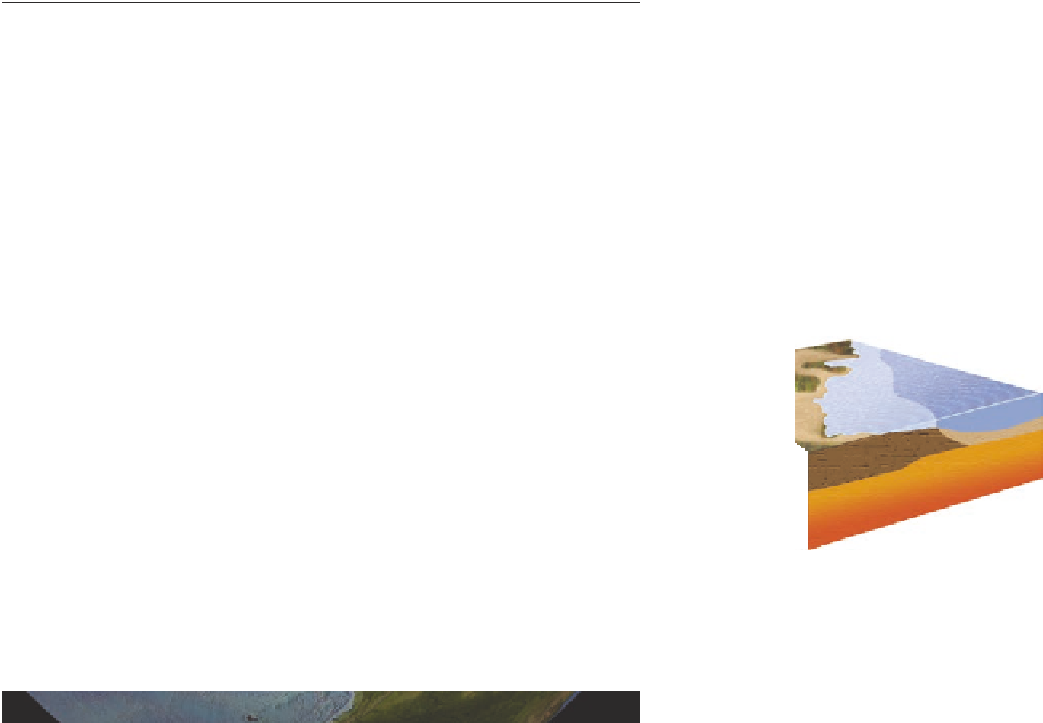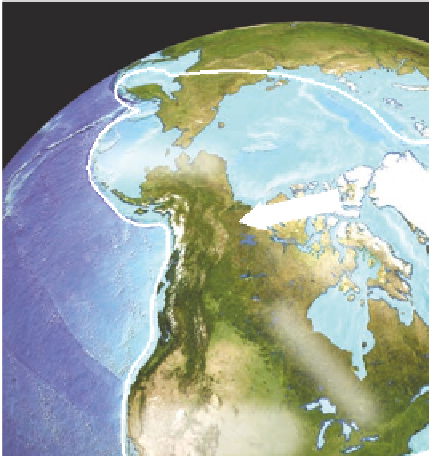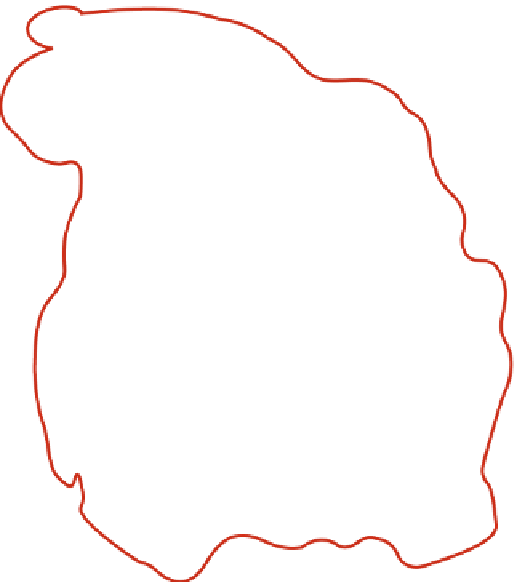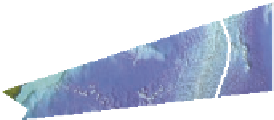Geoscience Reference
In-Depth Information
with the southern side of the Asian continent. This collision
created the Himalaya Mountains, which will be discussed in
more detail later in the chapter.
bordering oceanic crust are actually on the same tectonic plate.
One such place is the eastern seaboard of North America, which
has a passive margin with the oceanic crust in the western part
of the Atlantic Ocean basin. Even though the continental crust
that forms the North American landmass is a separate rock body
from the adjoining oceanic crust, they are both a part of the
North American plate (Figure 13.6). As a result, they have a
passive margin because it is not geologically active.
Types of Plate Movements
With the concept of plate movement in mind, let's now look
more closely at the various types of plate movements and
the impact they have on the Earth's surface. For the sake of
simplicity, consider that the range of potential plate movements
includes (1) moving away from each other, (2) sliding past each
other, and (3) colliding head on. This section discusses these
types of plate movements and how they shape Earth's surface.
Transform Plate Margins
Another type of plate boundary is the
transform plate margin
.
In contrast to passive plate margins, transform boundaries
are places where plates slide horizontally past each other
(Figure 13.7a). At transform margins, the plane of motion is
along a nearly vertical break (or fault) that extends through
much of the lithosphere. The San Andreas Fault in California
and the Dead Sea Fault along the border of Israel and Jordan
(Figure 13.7b) are excellent examples of transform faults. The
San Andreas Fault will be discussed in more detail later in this
chapter in the context of earthquakes.
Passive Margins
The simplest kind of tectonic interaction occurs at
passive
margins
. As the name implies, passive margins are relatively
stable localities from a tectonic perspective. These regions
frequently occur in places where the continental crust and the
Passive margin
A place where the continental crust and the
oceanic crust are on the same tectonic plate and thus do not
move relative to each other.
Transform plate margin
A plate boundary where opposing
plates move horizontally relative to each other.
Figure 13.6 Passive margin along the eastern edge of
North America.
The continental crust of North America
meets the oceanic crust of the Atlantic Ocean. Nevertheless,
they are part of the same tectonic plate and are slowly mov-
ing as one body to the northwest.
Alaska Range
Direction
of motion
Continental
shelf
Oceanic
crust
Rocky
Mountains
Great
Plains
Asthenosphere
Continental
crust
Gulf of
Mexico
Atlantic Ocean





















































